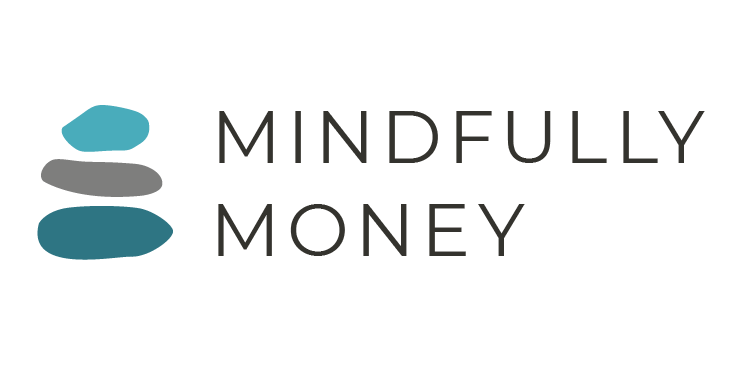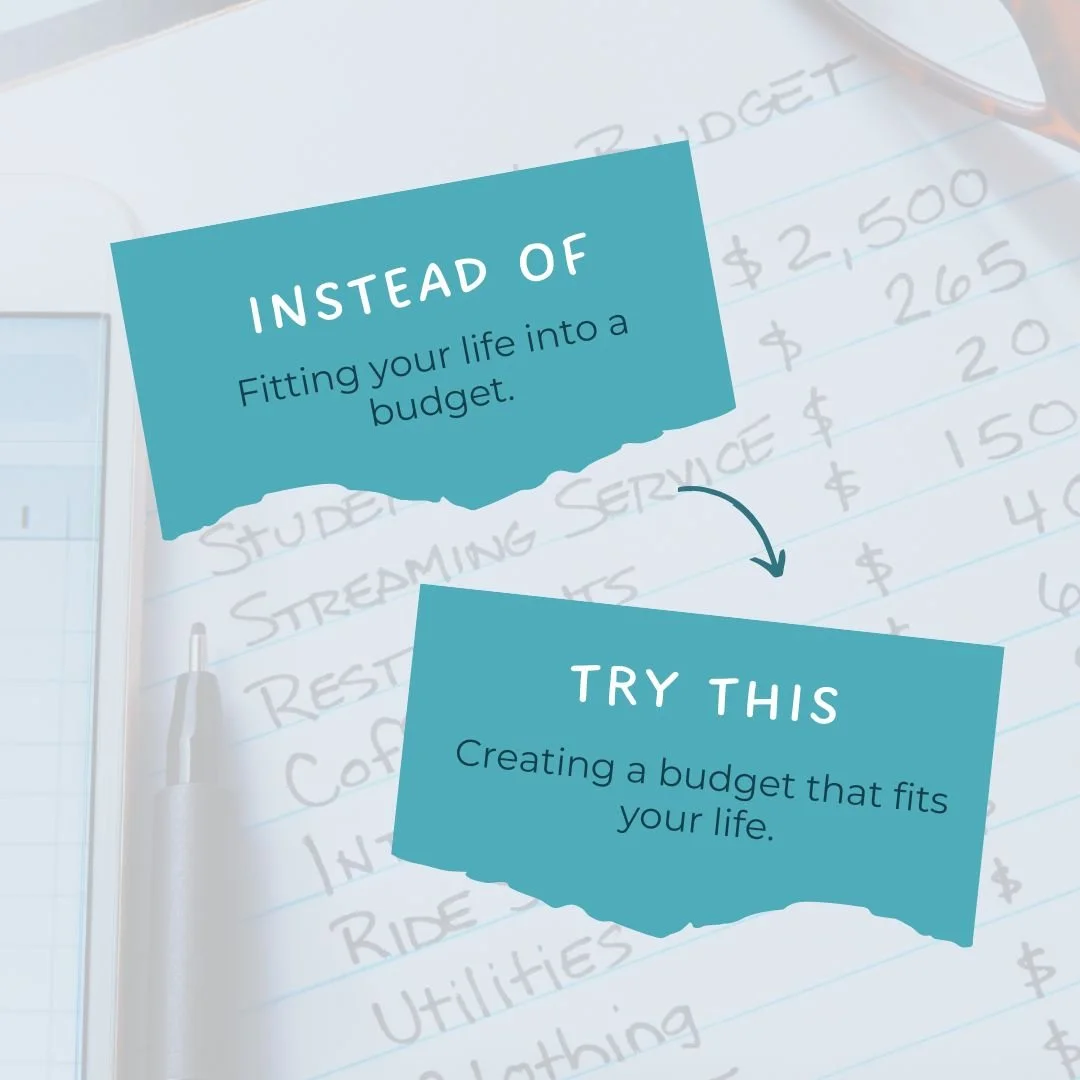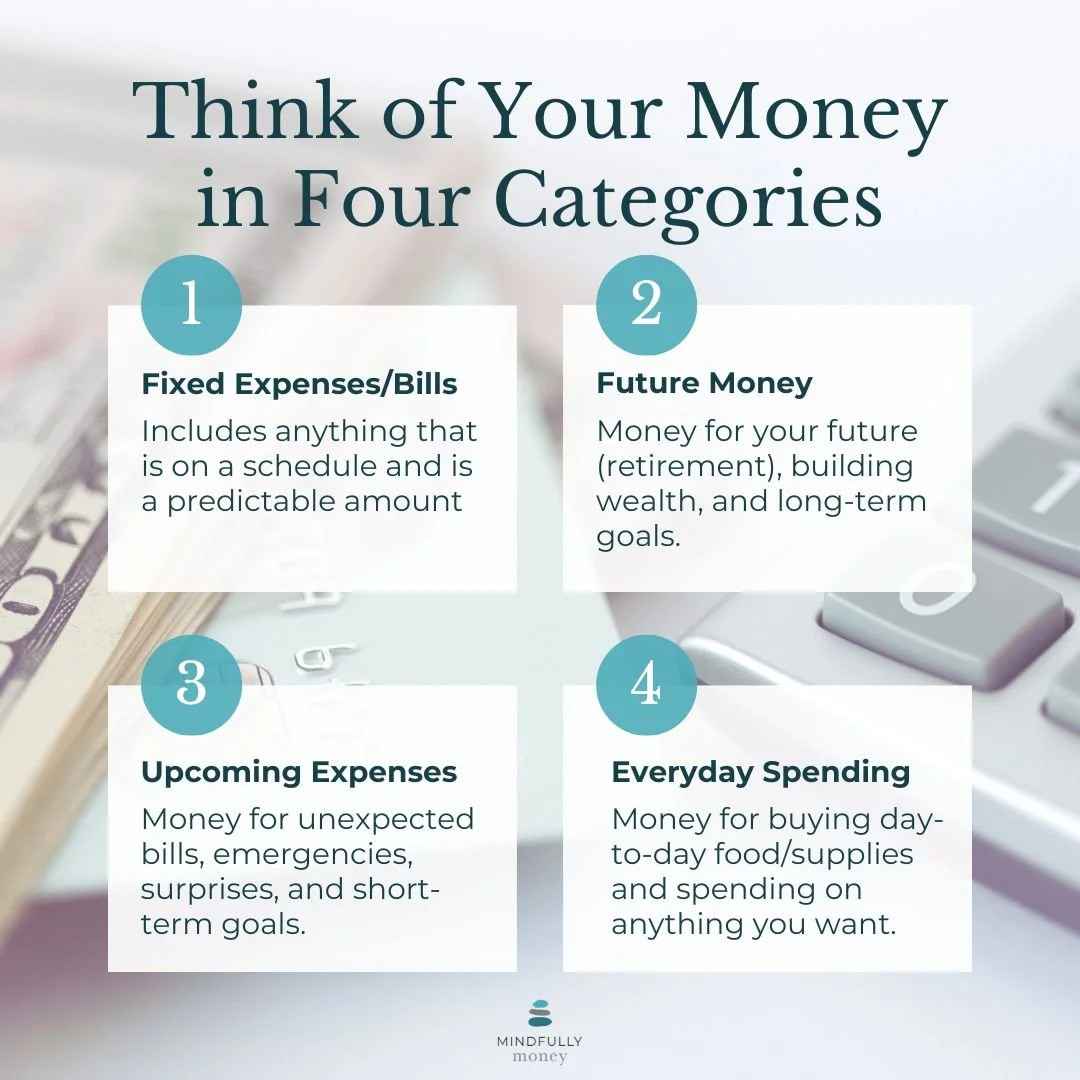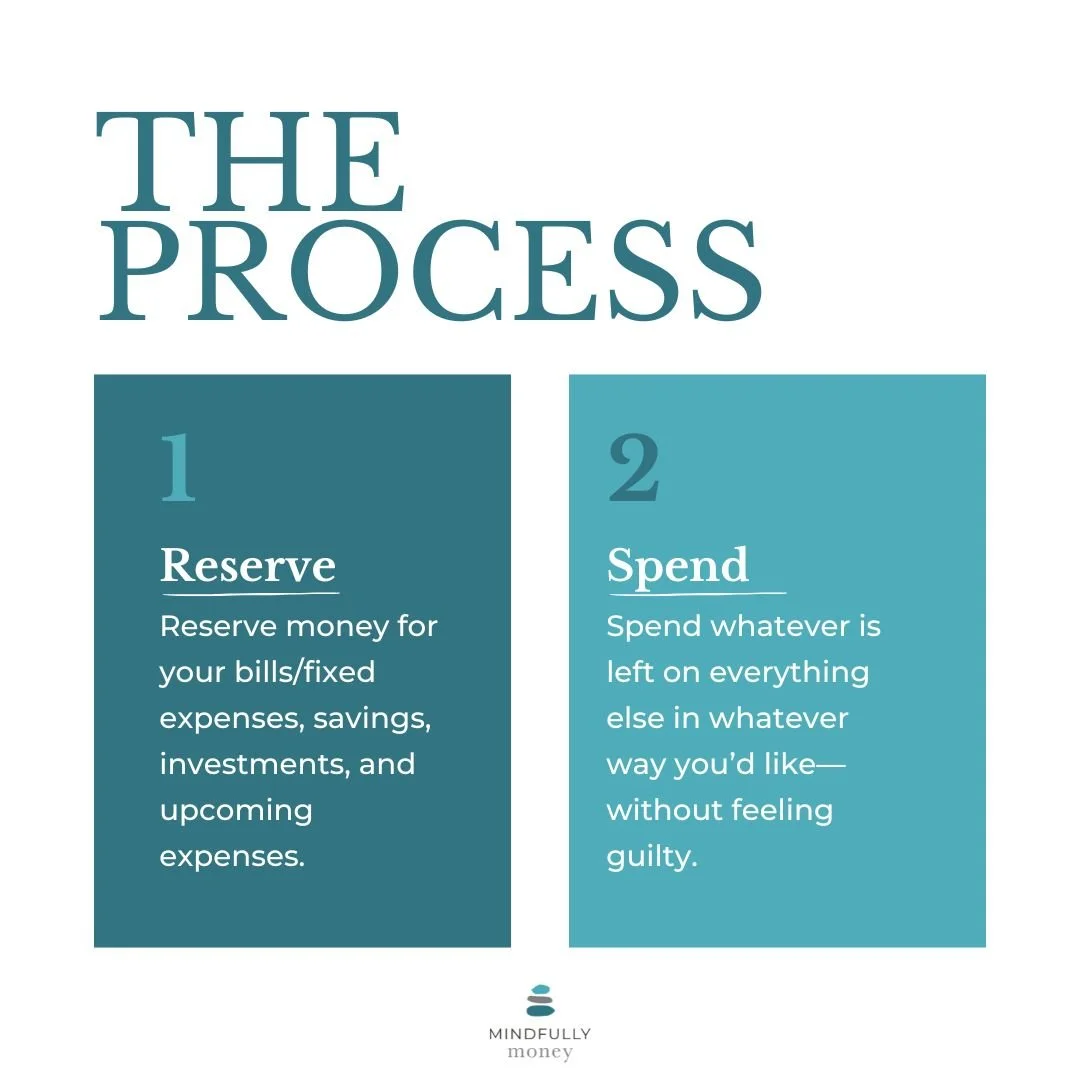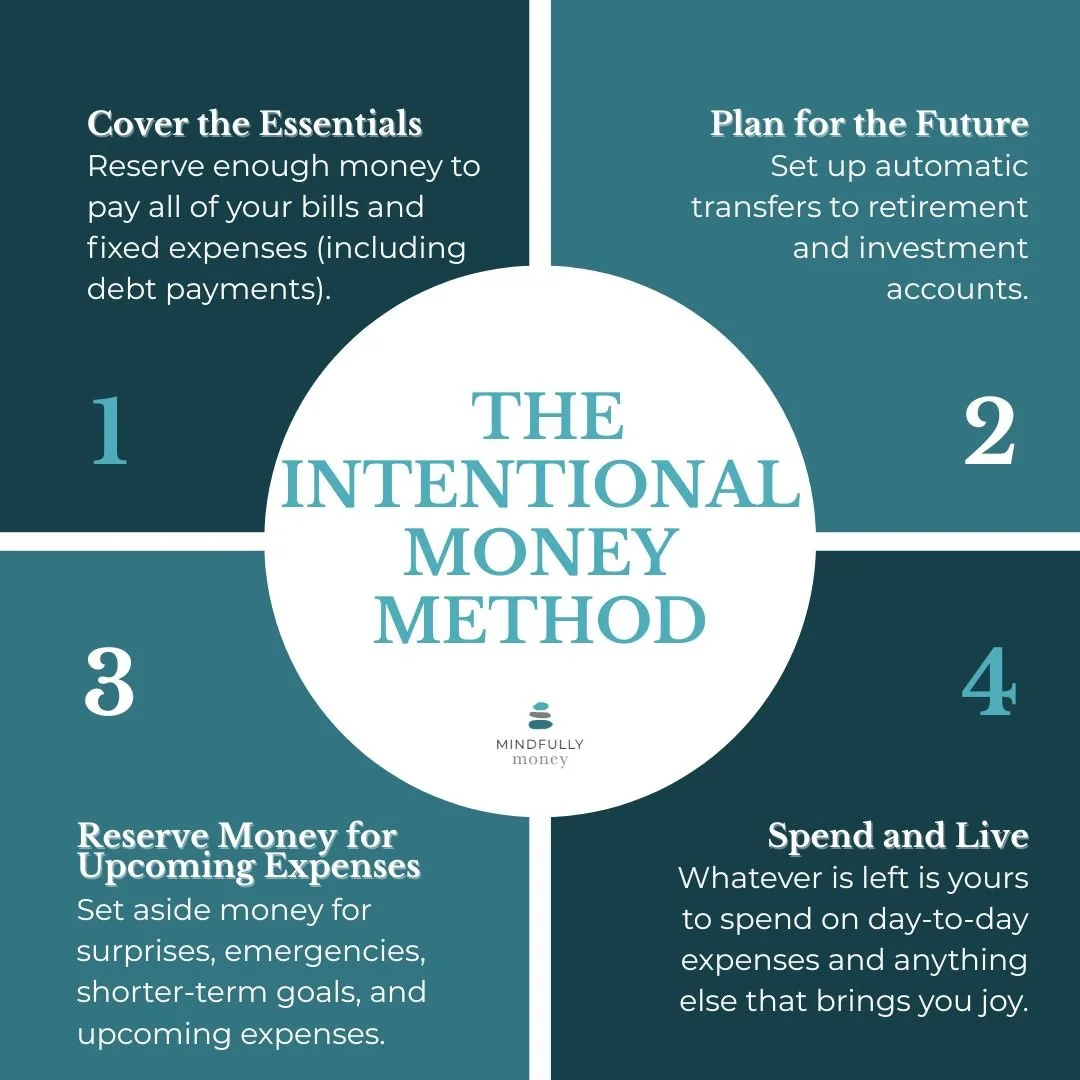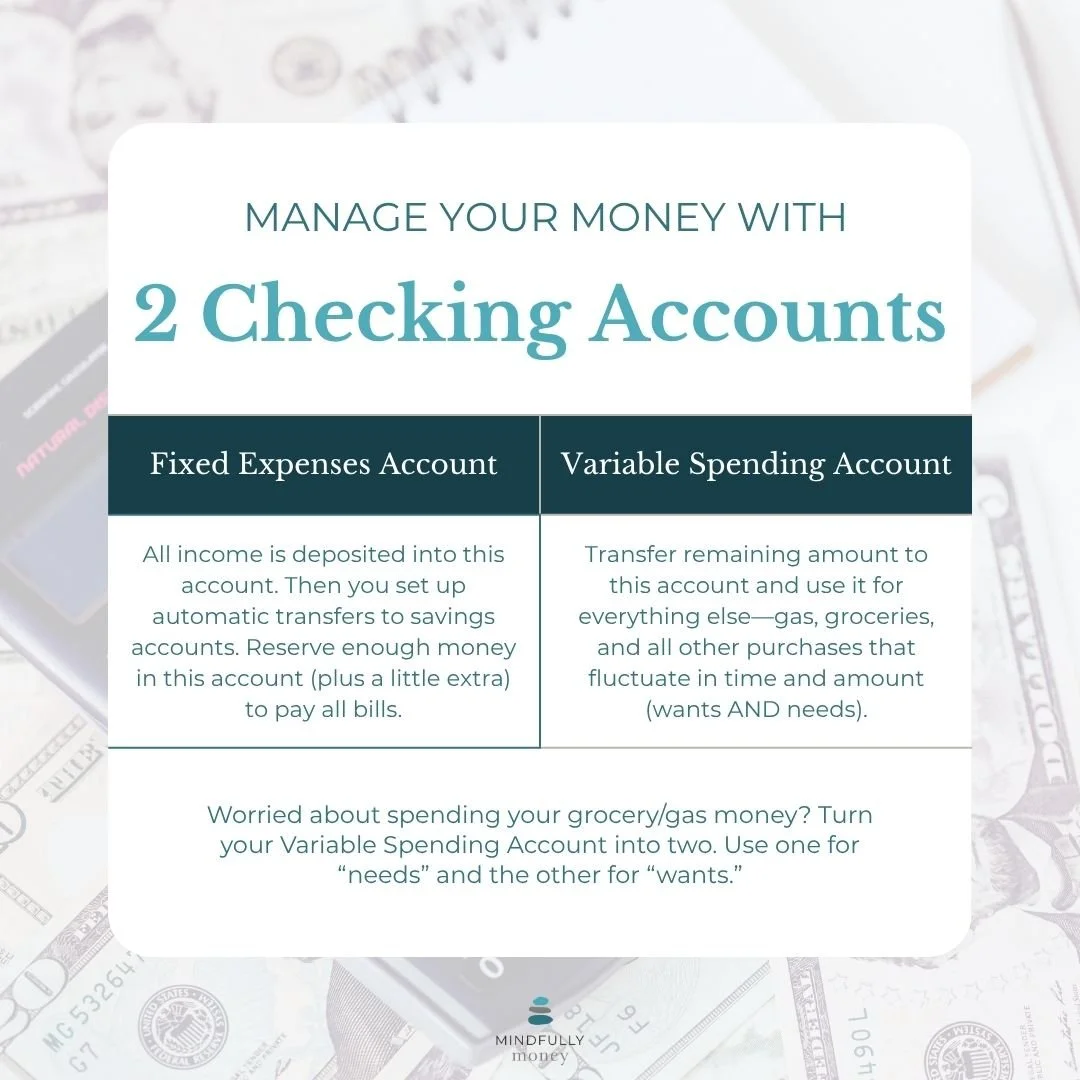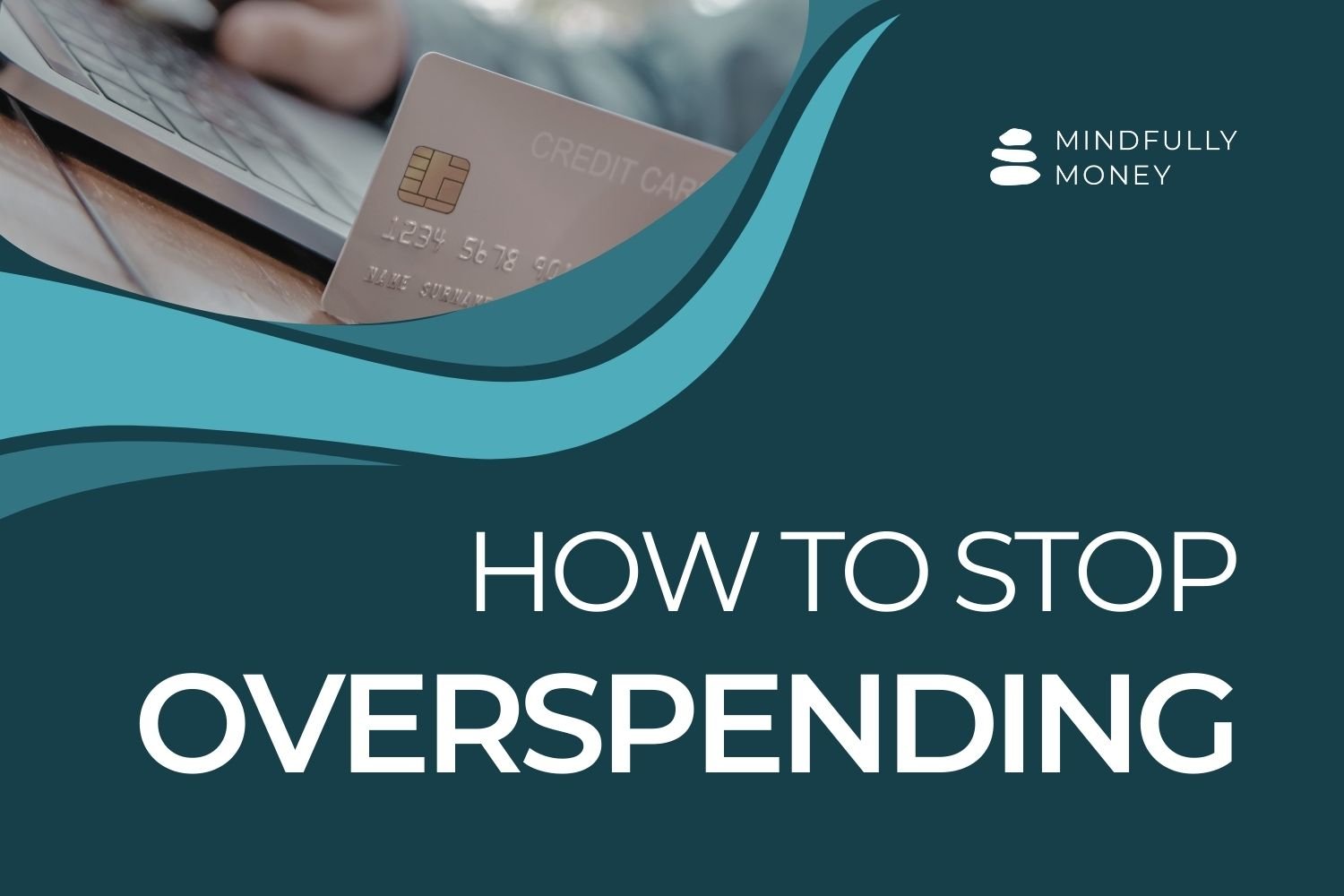Why Traditional Budgets Don’t Work (and What to Try Instead)
If you’ve tried budgeting and struggled to get it to work, you’re not alone.
Many people start a budget with good intentions—carefully dividing their money into categories, setting spending targets for each one, and then trying their best to stay within those limits. Inevitably, something happens that derails your plan (because that’s how life works) and you give up because it didn’t work. You might even feel like there’s something wrong with you that you can’t figure it out.
But here’s the thing: it’s not you. It’s that traditional budgeting often sets you up for failure.
Why Budgets Fail (and It’s Not Your Fault)
Most budgets look like a math problem: take your income, divide it perfectly to cover bills and wants, and then stick to it. But life doesn’t work that way. It’s messy, unpredictable, and full of emotion-driven decisions.
In fact, the main reason budgets fall apart is unpredictable and inconsistent income and expenses—NOT because you’re bad with money. It could be the car breaking down, medical bills, replacing a broken appliance, or something you actually want to enjoy like a friend’s wedding or a last-minute trip. And having income that fluctuates makes it even more complicated.
The reality is that most budgets don’t build in the flexibility for handling these surprises and inconsistencies.
A Budget That Fits Your Life
So if you’ve struggled to figure out how to budget and make it stick, it’s not that you’re bad with money. You just need a system that combines structure and clarity with flexibility — so your money can adapt to your life, rather than the other way around.
That’s why I created The Intentional Money Method.
The Intentional Money Method
This method is a flexible framework designed to:
Give you a clear picture of where your money goes
Show you exactly how much you can spend without guilt or worry
Build in wiggle room for life’s surprises
Help you align your money with your values and goals
Instead of micromanaging every dollar, you think of money in four simple, purpose-driven categories:
Money for your essential bills and fixed expenses
Money for your future life goals and growth
Money reserved for upcoming expenses and surprises
Money for living your life now
This shift makes budgeting feel simpler and helps you feel confident and in control.
How It Works
Most people pay their bills, buy what they need, and hope something is left to save or spend on fun stuff. Often, there isn’t anything left, and it’s easy to wonder, “Where did my money go?”
This happens not because you’re overspending, but because:
You can’t see what’s really happening with your money
You don’t know how much you can safely spend
You’re managing money reactively (responding to things that happen) rather than proactively (planning ahead)
The Intentional Money Method helps you flip the script: you’ll learn how to prioritize your money first, then spend what remains in any way that makes sense for you.
Intentional Money Plan Steps
1. Cover Your Essentials
Purpose: Provide stability and peace of mind.
This is the money that keeps your life running—the bills and obligations that happen on a schedule and are a predictable amount. These are often monthly expenses, but can also include yearly, quarterly, or other scheduled bills.
It includes:
Rent or mortgage
Utilities, insurance, subscriptions
Minimum debt payments
Childcare or other consistent commitments
Anything that is on a schedule (whether a “need” or a “want”)
The goal is to reserve enough money each month to pay all of your fixed bills and obligations.
Guiding idea: Taking care of all of your fixed expenses first reduces stress and increases your sense of security.
Tip: Keep these in a dedicated account and automate payments. Once these are covered, you know what’s really safe to spend.
2. Plan for the Future
Purpose: Support long-term freedom and financial well-being.
This is your future money—what helps you build stability and independence over time.
It includes:
Retirement contributions
Long-term investments
High-interest debt paydown (if applicable)
Major life goals 5+ years away
Guiding idea: You’re caring for your future self by consistently setting aside money now.
Tip: Automate transfers right after payday. Even small amounts add up!
3. Reserve for Upcoming Expenses
Purpose: Prevent “surprise expenses” from becoming crises.
This is the money that helps you plan ahead for unexpected expenses, surprises, emergencies, and things that you want to have/do in the near future.
It includes:
Short-term goals (travel, home projects, gifts)
Irregular expenses (car repairs, medical, annual fees)
General emergency savings
Guiding idea: You’re giving yourself flexibility and the peace of mind to know you’ll be okay when life happens.
Tip: Use a separate savings account with clear labels (“Holiday Fund,” “Car Repair Fund”) and add regularly.
4. Spend and Live
Purpose: Manage your day-to-day life with ease and awareness.
This category includes variable essentials and daily spending—everything that fluctuates in both amount and timing.
It includes:
Groceries and household items
Gas and transportation
Restaurants, coffee, personal care, small shopping
Anything you feel like purchasing
Guiding idea: Now that you’ve taken care of your priorities, you can spend the rest in any way that makes sense to you.
Tip: Use a separate spending account with a set amount each payday. Track the balance to guide your spending.
Managing Your Plan with Two (Or More) Checking Accounts
Keeping track of your money can be done in a number of ways, but one of the easiest, most straightforward options is to use multiple checking accounts.
At a minimum, it’s a good idea to have two checking accounts:
One for paying bills and transfering money to savings
One for variable spending
Here’s how it works:
Deposit all income into one checking account.
Reserve enough money (plus a little extra) in this account to pay all bills and fixed expenses. (Intentional Money Method Step 1)
Transfer money to savings accounts. (IMM Steps 2-3)
Transfer what’s left to your spending account (IMM Step 4)
Spend only from your spending account. Your balance tells you how much you have left to spend. If the money runs out, it’s a natural sign that you need to wait until next month.
This system helps you set aside money for paying your bills and setting aside money for your priorities, while clearly showing how much you can spend on everything else. You never have to wonder if there’s enough to pay your bills.
What if I spend all my money and don’t have enough for groceries?
If you’re worried about overspending and not having enough for essential variable expenses like gas, groceries, and other necessities, you can add a third checking account. The three accounts would be:
Bills/fixed expenses and transfers to other accounts
“Needs” Spending (gas, groceries, etc.)
“Wants” Spending (everything else)
You can customize this system however you’d like to fit your needs and make your life as easy as possible.
Where do I put the money for upcoming expenses?
I like to leave some extra money in my bills checking account as a buffer and to cover price increases, higher energy bills at certain times of the year, yearly subscriptions, etc. That gives me a lot more flexibility.
Beyond that, the best way to reserve money for upcoming expenses, surprises, emergencies, and short-term goals is to save money in a high yield savings account that allows you to divide your savings into subaccounts or savings buckets. For example, you could have a fund for emergencies, one for vacations, one for holiday shopping, etc.
Learn more about this strategy:
Tracking Your Money
Once you’ve got your system set up, it’s a good idea to have a system for tracking where your money goes each month. This does NOT need to be a complicated system including 30 categories and requiring that you spend hours dividing up your receipts.
You can choose any method you’d like (app, notebook, spreadsheet, etc), as long as:
It’s a system you will actually use every month
It allows you to check and make sure your bills got paid
It gives you some basic information about how you spent money so that you can make adjustments as needed
Learn more about tracking your finances in general, or get the system and template I use for tracking my finances (complete with instructions on how to use it).
The Goal Is Not Perfection
Creating a plan for your money isn’t a one-and-done situation where you do it once and then you’re done. Your life will naturally evolve and your budget should too. So let go of the idea that you’re going to design this perfect budget the first time around and start viewing it as an ongoing process where you change and adapt over time.
There’s no way to predict what life will bring, so do your best to plan what you can, build some wiggle room and flexibility into your budget, and keep going.
If you’d like someone to walk through this process with you and help you create your plan, I’m here for you. Check out my financial coaching page and schedule a free call to learn more.
